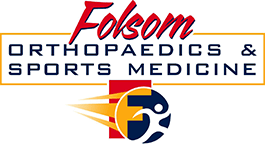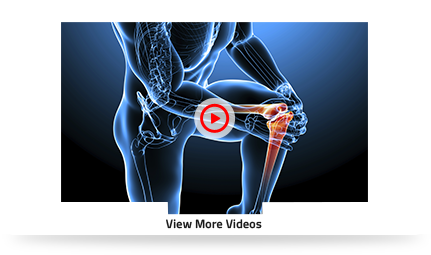Post-operative Instructions
General Instructions
The basic general instructions that you should follow after surgery are as follows:
- Take pain relieving and other medications as advised. Pain relieving medication should be taken with food. After the first 48 hours of surgery, take the pain medication only when needed.
- Do not drink alcohol, drive a vehicle, operate any machinery or sign a legal document for the first 24 hours after the surgery as the effects of the sedative and/or the anaesthesia administered during the surgery may last for the first 24 hours of the surgery.
- Use ice packs to control swelling. However, make sure that the ice bag does not leak into the dressing. Ice packs can be used liberally for the first 48 hours and even later, if required.
- Follow the specific restriction of activity, as advised. Remember that it is easier to prevent developing pain rather than managing it once it has already developed. Rest for a few days after the surgery and keep the operated extremity elevated, above the level of your heart, to control swelling.
- Keep the dressing clean and dry to promote wound healing.
- Try to begin physical therapy a day or two after the surgery. Exercises in the first week are usually aimed at regaining joint motion. Strengthening exercises are initiated later. Regular exercises are critical for a successful outcome.
- Eat a healthy diet and drink plenty of non-alcoholic and non-caffeinated drinks.
- Schedule your follow-up appointment with your doctor as advised.
Please consult your doctor immediately if you experience any of the following symptoms:
- Increased drainage from the incision
- Increased redness around the operated area
- Increased swelling that does not decrease with ice and elevation
- Foul odour
- Fever greater than 101°F
- Coldness, numbness or blanched white or bluish colour of the fingers or toes
- Sudden calf pain or shortness of breath
- Chest pain
Knee Arthroscopy
- Change your dressing in 48 hours – remove the bulky dressing and apply bandaids to the incision sites. Do not remove the steri strips or sutures
- Weight bearing as tolerated – unless otherwise indicated
- Elevate your leg above the level of your heart on the day of surgery and the day following surgery
- Perform ankle pumps and ankle circles while elevated
- You can apply an ice pack to your knee for 20 min at a time – do not apply directly to the skin
- Take medications for pain as prescribed
- Take aspirin as indicated for the first 7 days
- Contact our office if you have excessive drainage, pain or any other concerns
- Exercise: you can begin quad sets as tolerated on day #2, begin to work on range of motion as tolerated and begin a stationary bike if available on day 4 or 5
- You may be given a prescription for physical therapy at your first post-op visit
Shoulder Arthroscopy
- Change your dressing in 48 hours - remove the bulky dressing and apply bandaids to the incision sites. Do not remove the steri strips or sutures
- You can apply an ice pack to your shoulder for 20 min at a time – do not apply directly to the skin
- Take medications for pain as prescribed
- Take aspirin as indicated for the first 7 days
- Contact our office if you have excessive drainage, pain or any other concerns
- Exercise: you can begin range of motion at your elbow, wrist and hand as tolerated. You can begin gentle pendulum activities out of your sling (if using one)
- Plan to begin your physical therapy approximately one week following your surgery
Carpal Tunnel Release
- Change your dressing every (consult Provider) hours – remove the bulky dressing and apply bandaids to the incision sites. Do not remove the steri strips or sutures
- You can apply an ice pack to your wrist for 20 min at a time – do not apply directly to the skin
- Take medications for pain as prescribed
- Take aspirin as indicated for the first 7 days
- Contact our office if you have excessive drainage, pain or any other concerns
Rotator Cuff Repair / Labral Repair
- Keep your arm in the sling at all times unless otherwise instructed • Change your dressing in 48 hours – remove the bulky dressing and apply bandaids to the incision sites. Do not remove the steri strips or sutures • You can apply an ice pack to your shoulder for 20 min at a time – do not apply directly to the skin
- Take medications for pain as prescribed
- Take aspirin as indicated for the first 7 days
- Contact our office if you have excessive drainage, pain or any other concerns
- Exercise: you can begin gentle range of motion at your wrist and hand as tolerated. Your doctor will advance your program at your first office visit
- If instructed, you may begin your physical therapy on the first day following your procedure
Fracture Reduction – Closed, Percutaneous Pinning, ORIF
- Keep your arm/leg in the splint at all times unless otherwise instructed
- Take medications for pain as prescribed
- Take aspirin as indicated for the first 7 days
- Contact our office if you have excessive drainage, pain or any other concerns
- You will be given additional instructions at your first post operative visit with your doctor
- Often, your splint will be removed and you will possibly be transitioned to a cast, boot, or new splint as indicated
Total Joints – Knee/Hip
- You will be hospitalized at Mercy Folsom Hospital following your procedure for approximately 2 – 5 days
- Upon discharge, you will have a follow up visit scheduled with our office for your first post operative visit
- You will likely have a home health assessment if in fact, you are going home otherwise, you will be transitioned to a skilled nursing facility for the initial phases of your rehab upon release from the hospital
- You will be allowed to weight bear as tolerated using a front wheel walker unless otherwise indicated
- Total knee patients will be using a Continuous Passive Motion (CPM) machine immediately post operatively and this will also go home with you to help increase your knee motion
- Total hip patients will likely be in a protective splint for your hip while you are in the hospital

